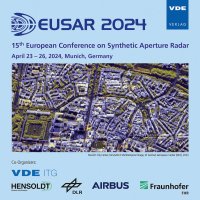Cross-validation of NISAR ISCE-3 Product Workflow with the Stanford Back Projection InSAR Framework
Konferenz: EUSAR 2024 - 15th European Conference on Synthetic Aperture Radar
23.04.2024-26.04.2024 in Munich, Germany
Tagungsband: EUSAR 2024
Seiten: 3Sprache: EnglischTyp: PDF
Autoren:
Zebker, Howard; Rosen, Paul
Inhalt:
The NASA-ISRO SAR (NISAR) Mission should be in orbit, and possibly producing interferograms, by this meeting, inviting initial examination and cross-validation of the products and algorithms being developed by the project with other standard software. Interferograms present the phrase of the complex radar returns from multiple acquisitions, so understanding the details of the phase response of the system is critical for obtaining the most precise measurements possible. The InSAR Scientific Computing Environment 3 (ISCE-3) is the NISAR Project Framework for creating Level 1 and 2 interferometric and polarimetric products, including range-Doppler and geocoded complex images, interferograms and polarimetric covariance matrices. A functionally similar set of software, the Stanford Backprojection Framework, produces many of the same data products, plus higher level derivatives. We soon will analyze NISAR Level 0 data to compare and cross-validate ISCE-3 products with those from the Stanford back-projection codes. Based on reformatted ALOS-1 data, geocoded single look complex data products from each are quite close, with slight phase differences. Our goal is to understand and eliminate these discrepancies, and validate each through comparison of deformation time series with in situ GPS observations.


